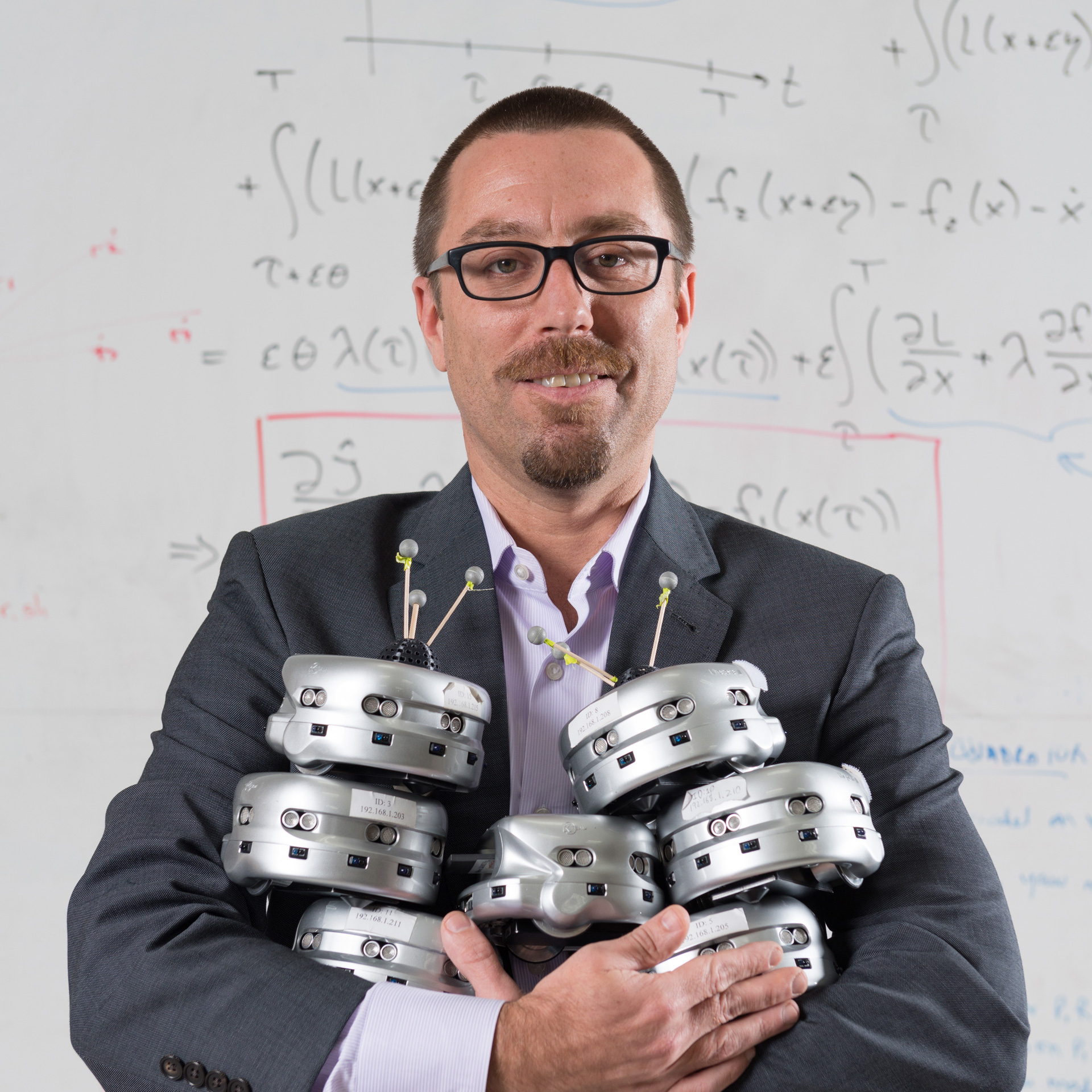Seminar
Neuromorphic Event-based time oriented vision and Computation
Abstract: There has been significant research over the past two decades in developing new systems for spiking neural computation. The impact of neuromorphic concepts on recent developments in optical sensing, display and artificial vision is presented. State-of-the-art image sensors suffer from severe limitations imposed by their very principle of operation. These sensors acquire the visual [...]
“Does it look right? – Why capture and reconstruction quality really matter.”
Special RI Seminar Please Note Different Day and Time Abstract: At first sight, 3D reconstruction can be considered a solved problem. The principles are well understood and we can reconstruct a wide range of objects and scenes using active as well as passive reconstruction approached. However, most of these reconstructions are not convincing when really [...]
Factor Graphs and Automatic Differentiation for Flexible Inference in Robotics and Vision
PLEASE NOTE: THIS SEMINAR WILL NOT BE RECORDED Abstract: Simultaneous Localization and Mapping (SLAM) and Structure from Motion (SFM) are important and closely related problems in robotics and vision. I will review how SLAM, SFM and other problems in robotics and vision can be posed in terms of factor graphs, which provide a graphical language [...]
Towards Goal-Driven Visually Grounded Dialog Agents
Abstract: Communication between human users and artificial intelligences is essential for human-AI cooperative tasks. For these collaborations to extend into real environments, artificial agents must be able to perceive their environment (visually, aurally, tactilely, etc.) and to communicate with humans about it in order to accomplish mutual goals. For example, a user might talk with [...]
Robots and the Smart Home
Abstract Home robots, such as the iRobot Roomba vacuuming robot, have been welcomed into millions of homes around the world and are hard at work every day helping people to get more done. iRobot is the market leader in home robotics and is at the forefront in developing technologies for practical robots, including visual SLAM, [...]
Long Duration Autonomy With Applications to Persistent Environmental Monitoring
Abstract: By now, we have a fairly good understanding of how to design coordinated control strategies for making teams of mobile robots achieve geometric objectives in a distributed manner, such as assembling shapes or covering areas. But, the mapping from high-level tasks to geometric objectives is not well understood. In this talk, we investigate this [...]
Marine Robotics: Planning, Decision Making, and Learning
Abstract: Underwater gliders, propeller-driven submersibles, and other marine robots are increasingly being tasked with gathering information (e.g., in environmental monitoring, offshore inspection, and coastal surveillance scenarios). However, in most of these scenarios, human operators must carefully plan the mission to ensure completion of the task. Strict human oversight not only makes such deployments expensive and [...]
On challenges in image generation
Abstract: Recent work has shown impressive success in automatically synthesizing new images with desired properties such as transferring painterly style, modifying facial expressions, increasing image resolution or manipulating the center of attention of the image. In this talk I will discuss two of the standing challenges in image synthesis and how we tackle them: - [...]
Learning Common Sense: a Grand Challenge for Academic AI Research
Abstract: In a world where Google, Facebook, and others possess massive proprietary data sets, and unprecedented computational power---how is a graduate student to make a dent in the universe? I’ll address this conundrum by re-visiting one of the holy grails of AI: acquiring, representing, and utilizing common-sense knowledge. Can we leverage modern methods including deep [...]
Signal Processing – From Images to Surfaces
Abstract: In this talk we will revisit some classical techniques from image processing and explore what is involved in translating them to the context of surfaces. We will show that by leveraging existing methodology from discrete differential geometry, it is often easy to extend the image-based techniques so that they can be used to edit [...]









